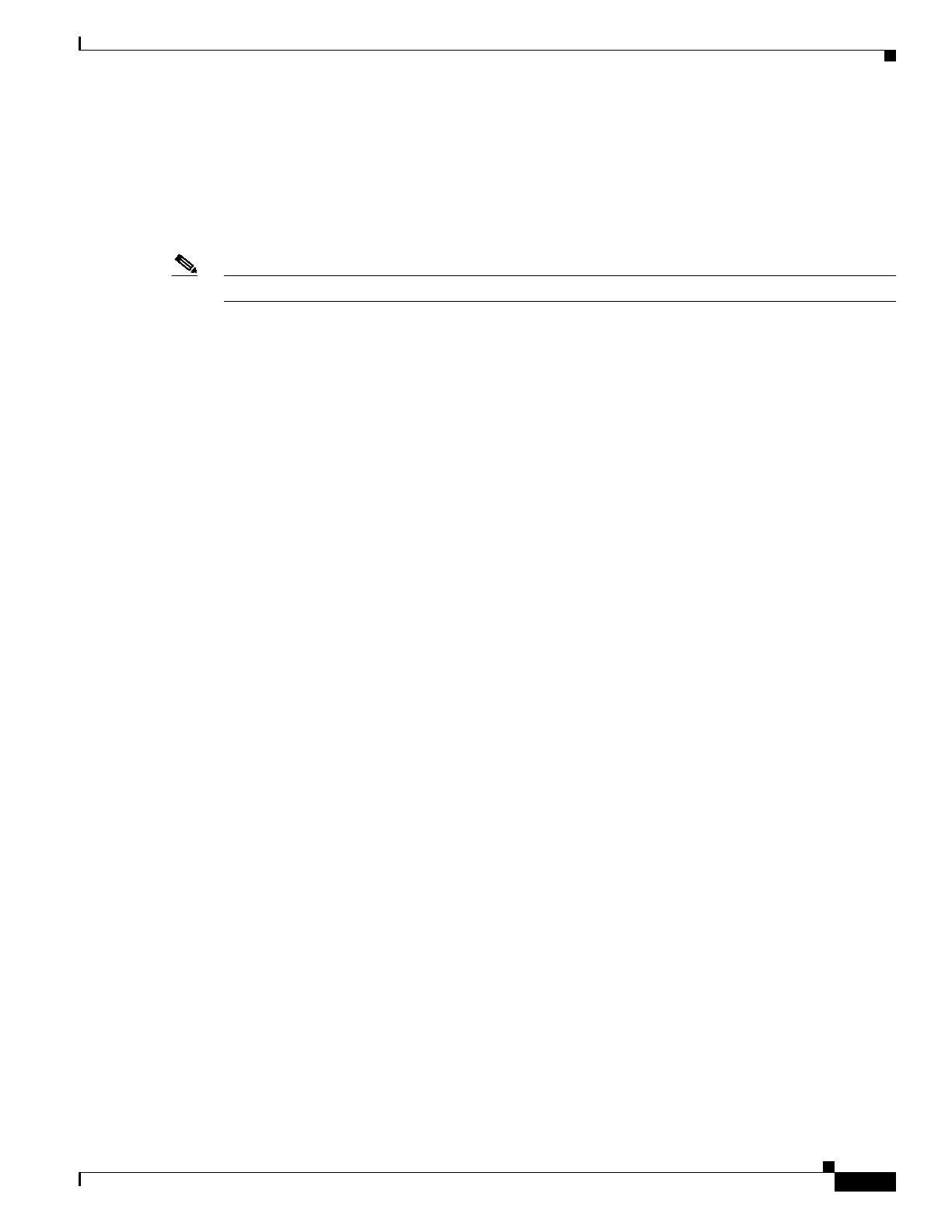
2-7
Cisco BTS 10200 Softswitch SIP Protocol User Guide
OL-5352-03
Chapter 2 SIP Protocol Subscriber Features
Cisco BTS 10200 Softswitch-Based Features
Call Forwarding Activation and Deactivation
Activation and deactivation of call forwarding features uses the star code. Alternately, the feature may
be activated or deactivated by using the Services key on certain phones.
With SIP support, the call forwarded to number can be a Centrex extension number (only applicable for
business users) or an E.164 number.
Note Forwarding to a URL (AOR) is not supported in Release 4.4.
SIP subscribers do not hear a final dial tone upon completing activation or deactivation. Instead, an
announcement plays for the subscriber, indicating that the status of the forwarding feature is being
activated or deactivated. This is irrespective of the Final Stage Dial Tone (FDT) flag (Y/N) provisioned
for these features.
Call Forwarding to an E.164 Number or an Extension Number
In Release 4.4, activation is accomplished using single-stage dialing. This applies to all activation and
deactivation.
Calling Name and Number Delivery
Calling number delivery (CND) provides the SIP subscriber endpoint with the date, time, and calling
number in an incoming call. When the called subscriber line is on hook, the calling party information is
delivered during the long silent interval of the first ringing cycle. Telcordia document GR-30-CORE
specifies the generic requirements for transmitting asynchronous voice band data to the SIP subscriber
line.
For more information, refer to the Calling Name Delivery section in the Cisco BTS 10200 Softswitch
System Description guide.
Rules
The rules associated with populating the calling party number in the outgoing INVITE from the
Cisco BTS 10200 to the terminating SIP phone are as follows:
• If the calling number is available, and the presentation indication is not restricted, the number is
populated into the user information portion of the From: header. Otherwise, this user information
field is empty.
• If the calling number is available, and the presentation indication is restricted, the display name field
of the From:header is set as ‘Anonymous.’ Otherwise, the following logic is used to populate the
name display field of the From: header:
–
If the calling name exists and the calling name presentation indication is not restricted, then the
calling name is populated into the display name field of the From: header. Otherwise, the
display name field in the From: header is left empty.
Calling Number Delivery Blocking (CNDB) controls whether the caller’s DN is delivered to the called
party. CNDB is supported on a call-by-call basis, by dialing a privacy feature code or by using the feature
key to prevent the subscriber’s DN from being delivered on the next call.
For more information, refer to the Calling Number Delivery section in the Cisco BTS 10200 Softswitch
System Description guide
